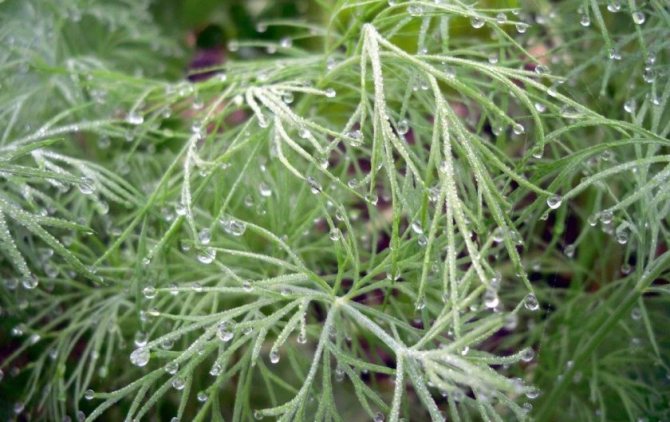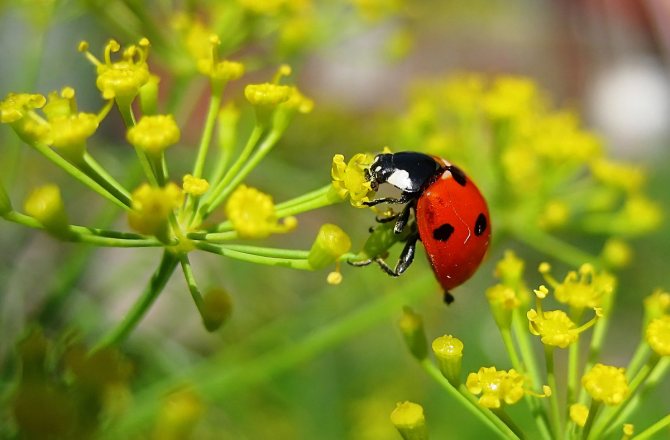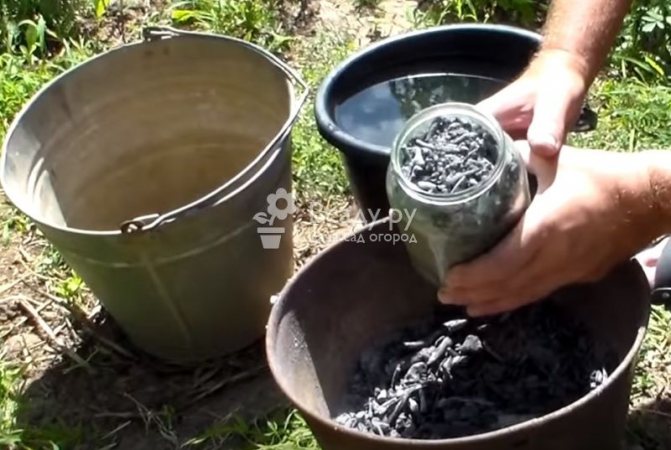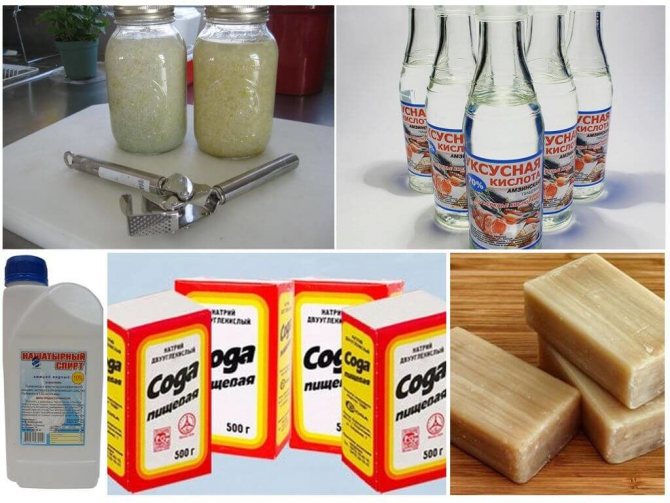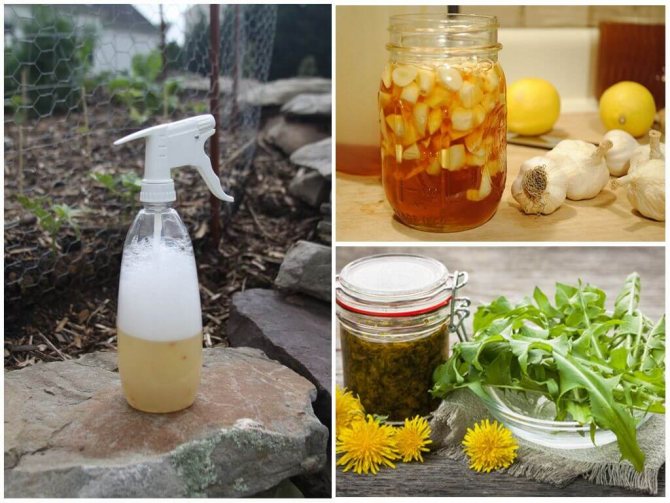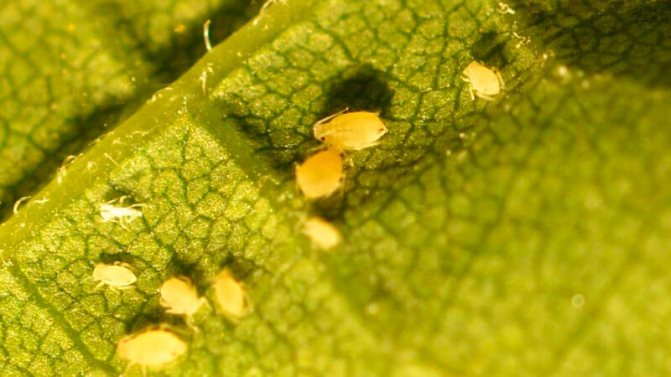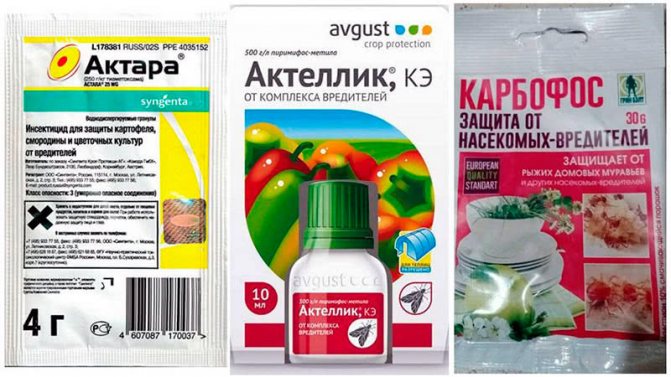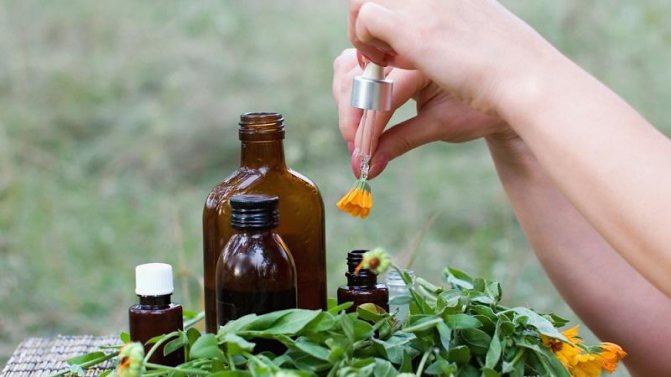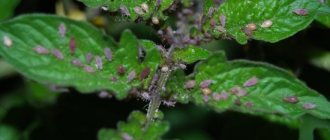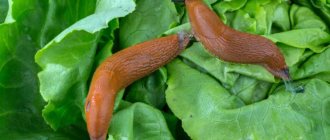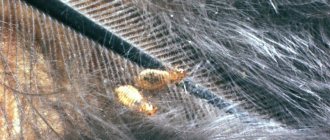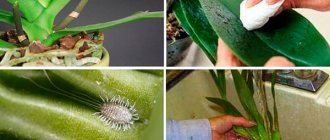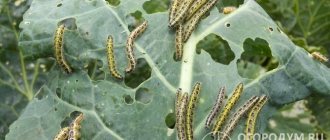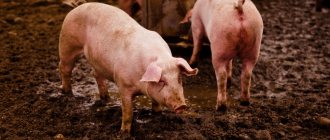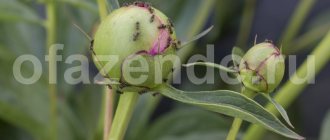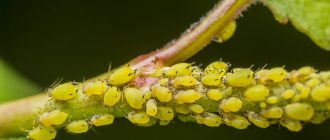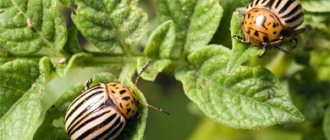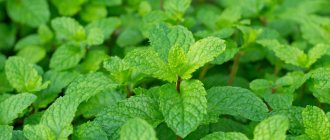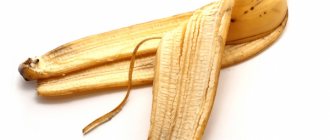Aphids are small insects, the body length of which does not exceed 7 mm. The life cycle of aphids begins with the emergence of the larva from the egg, usually with the arrival of heat. This insect pretty much spoils the life of gardeners. It parasitizes various plants and often leads to their death. You can get rid of aphids on dill using a variety of effective methods.
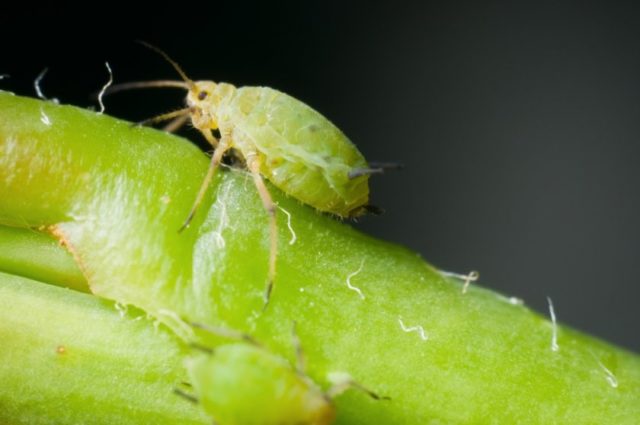
Reasons for the appearance of aphids on dill
The main reason for the appearance of aphids is common ants, which are attracted by the honeydew (sticky liquid) secreted by the aphids during their life. Ants not only consume this liquid, but also carry the larvae of harmful insects into anthills for the winter, thereby helping to preserve the offspring. To combat aphids, you need to get rid of the ants.
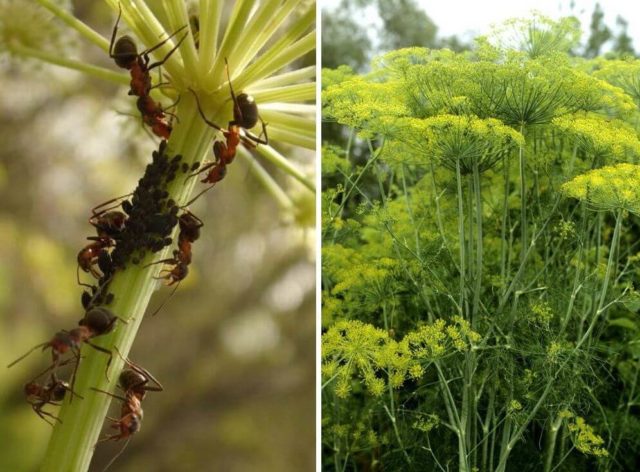

A possible reason for the appearance of aphids on dill is the successful wintering of eggs in the ground on the site.
Another reason for the occurrence of a pest on the site can be a lack of phosphorus or an excess of nitrogen in the soil under dill.
What does aphid look like and what is dangerous?
Aphids are small insects whose body length rarely exceeds 5–7 mm. There are about 4 thousand varieties. Each representative has a proboscis that helps to extract juice from shoots and leaves of plants. There are both flying and terrestrial forms of aphids, with large and almost invisible proboscis, which is associated with the nutritional characteristics of each individual genus.
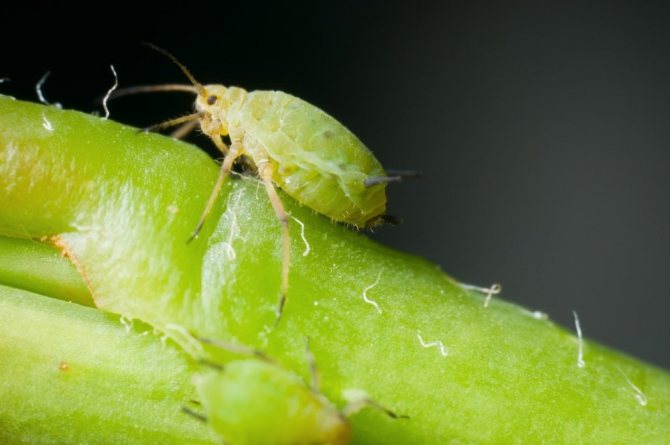

The life of aphids begins with the emergence of a larva from the egg, which enters the outside world with the arrival of the first stable heat. Parents can lay eggs even in the autumn, as many of them successfully survive the winter. A new individual, already in the form of a larva, begins to feed on the juices of the host plant.
The harm from the presence of aphids on cultivated plants is of a threefold nature:
- Firstly, insects themselves deplete the plant's nutrient reserves, without which the full-fledged formation of crop fruits is impossible;
- Secondly, they attract other pests to the site (for example, ants that feed on their sweetish secretions - honeydew);
- third, together with aphids, phytopathogenic viruses can get on plants, which often serve as causative agents of other ailments.
Did you know? One aphid is capable of producing up to three generations of new individuals in a month, with a total number of more than 100,000.
Whatever kind of aphids you have to face on the site, it is important to get rid of it in time, eliminating all possible causes of further reproduction.
Dill aphid control methods
The harm from aphids is obvious and undeniable:
- deprives the plant of nutrient reserves, the tops of the plant are deformed and dry out;
- sticky secretions (honeydew) from aphids inhibits the process of photosynthesis and is a favorable environment for the reproduction of various fungal and viral diseases;
- attracts other pests.
Dill is most often attacked by willow-carrot aphids, which can give up to 17 generations over the summer.
Ash-like scales (old aphid shell) indicate the presence of a pest.
On closer inspection, aphids of black or green color can be found on the inside of the leaves, on shoots or umbrellas.
There are many ways, methods and preparations for protecting dill from aphids.
The fight against the pest is complicated by the fact that the culture is eaten throughout the season. Based on this, the methods and preparations used should not leave toxins after processing.
In order to get rid of aphids, use the following methods:
- folk,
- "Original";
- physical;
- biological;
- chemical agents.
With the massive appearance of aphids on dill, it is recommended to use special preparations that are safe for humans.
Symptoms of defeat
At the very beginning of the disease, there are still few pest specimens, and they cannot be immediately noticed, so you should pay attention to the traces of insect activity, and this is:
- sticky spots that aphids secrete - serve not only as food for ants, but also as a breeding ground for fungal diseases (sooty fungus gives the impression that the leaves are covered with soot), and also contribute to a decrease in the process of photosynthesis, weakening dill;
- whitish scales under the bush or on its stems are the discarded old shell of adult insects.
If the plant is already severely affected, then you can understand this by seeing that:
- colonies of small (up to 2 mm in size) insects, from light green to black, very densely covered the whole plant, especially the back of the leaves and umbrellas, the tops of the buds;
- along the branches, as well as at the base of the bush, black ants quickly move in large numbers, feeding on insect dew;
- dill leaves, the tops of the umbrellas are deformed and have a wilted appearance.
More often young shoots, leaves and umbrellas of dill are affected by aphids. In places of the thinnest part of the shell of the leaf plate, the aphid pierces the skin with its proboscis and drinks the juice, depriving the plant of nutrients. It weakens, is inhibited in its development, begins to fade.
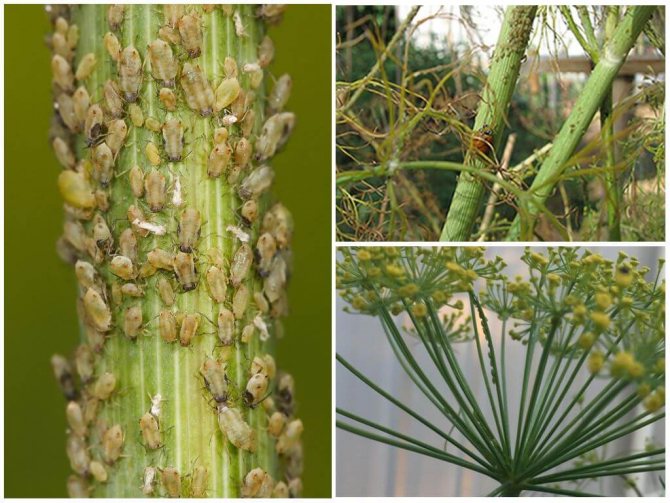

How to deal with aphids on dill using folk methods
You can get rid of aphids with:
- herbal decoctions and infusions that are effective and completely harmless to humans;
- enemies of aphids (for example, ladybugs).
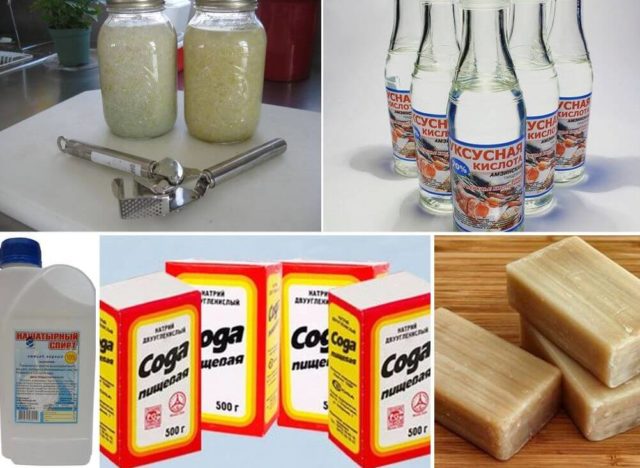

Herbal infusions and decoctions
For small lesions of dill aphids, you can use infusions or decoctions. Re-processing of dill will be required, since the duration of the action of the infusions is shorter than that of chemicals.
Herbal infusions
The ingredients for herbal infusions are readily available and the recipes are easy to prepare. Moreover, they are effective and safe.
Nettle
Nettle contains nutrients that make dill resistant to aphids. Nettle is crushed, diluted with water and infused for a week. The infusion is filtered and watered with dill for several days in a row.
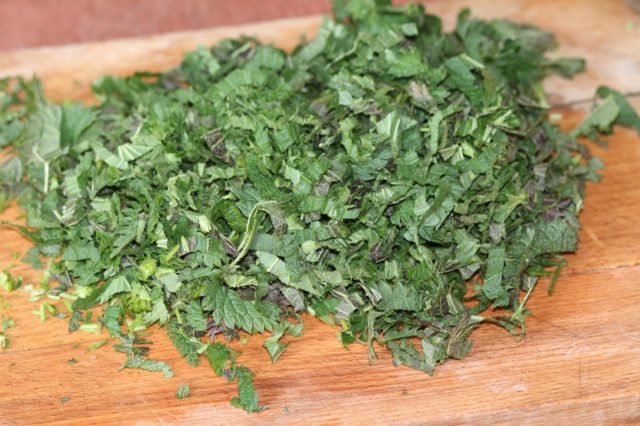

Onion
The following infusion will help get rid of aphids. 35 g of onions are cut and, together with the husk, are kept in 1 liter of water for 5 hours. Filter and add 1 tsp. crushed laundry soap. Add water to a volume of 1 liter and spray the affected dill.
Tobacco
Due to its strong smell, tobacco helps to get rid of aphids. Dilute 200 g of tobacco in 5 liters of water. Leave for 2 days. Bring to a volume of 10 liters, filter and spray areas of dill affected by aphids.
Garlic
To prepare the infusion, pour 1 liter of cold water and chop 200 g of peeled garlic. Insist for 4 days under the lid. Add 10 g of laundry soap for better adhesion of the solution to the surface of the leaves. The resulting concentrate (25 g) is diluted with 10 l of water.
From spices
Aphids don't like strong smells. Take 20 g of red, black peppers, cinnamon and coriander and pour 2 liters of cold water. Close with a lid and insist for 1 day. Dill is sprayed on a sunny day.
Herbal
For the preparation of herbal infusion, tansy, nettle, wormwood, celandine and yarrow are suitable. The grass is finely cut and filled with water. Close the container with a lid and insist for 24 hours, filter and process the affected dill.
Chamomile
100 g of dry chamomile flowers are poured into 1 liter of water and insisted for 12 hours. For spraying, dilute the infusion with water, maintaining a ratio of 1: 3. Additionally, add 1 tsp. crushed laundry soap.
Dandelion
To get rid of aphids, it is recommended to use an infusion of dandelion tops and roots. This will require:
- 200 g dandelion foliage;
- 100 g of roots.
The flowering plant is cut finely, 10 liters of water are added. Insist 4 hours and process the resulting infusion of dill affected by aphids.
From citrus peels
To prepare the infusion you will need:
- 100 g of peels from any citrus fruits;
- 1 liter of warm water.
Insist for three days.
Herbal decoctions
Herbal decoctions have insecticidal properties and are effective against insect pests, including aphids.
From tomato tops
Plants of the nightshade family contain a substance called solanine in the leaves and stem, which is fatal to aphids. To get rid of insects, you need the following decoction:
- 5 kg of tomato tops;
- 10 liters of water.
The composition is brought to a boil and insisted for 0.5 hour over low heat. Before spraying, add 30 g of soap and dilute with water in a 1: 3 ratio.
Hot pepper
Required components:
- 100 g of paprika;
- 1 liter of water;
- 40 g of laundry soap.
The composition is boiled for 1 hour under the lid. Insist 2 days, filter. For spraying, dilute with water in a ratio of 1:10.
From celandine
In order to get rid of aphids, the following decoction will help:
- 0.5 kg of fresh stems, leaves and flowers of celandine;
- 1 liter of water.
Celandine is crushed and water is added. Insist for two days. The resulting broth is boiled for 30 minutes, cooled and filtered.
Soda and salt
Soda and salt are affordable and effective remedies for garden pests, including aphids.
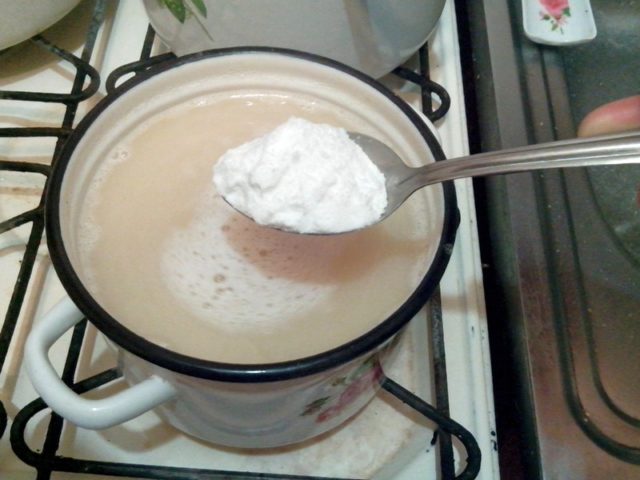

Important! For the preparation of folk remedies, baking soda is used, since soda ash contains a large amount of alkali, which contributes to the death of the plant.
To prepare an insecticidal agent, you need to dissolve 10 tbsp in 10 liters of water. l. baking soda or 1 kg of salt. Treat dill bushes affected by aphids.
Ammonia
Ammonia is also an effective and readily available remedy for aphids on dill. In addition to the fact that pests are repelled by the smell of ammonia, it is also a good nitrogen fertilizer. To prepare the solution you will need:
- 1 tbsp. l. ammonia;
- 1 liter of water.
The resulting solution is sprayed with dill 2 times a week in the evening, after watering.
Important! Excessive application of ammonia negatively affects the well-being and growth of dill.
Soap
Soap is part of any folk remedy, as it has an adhesive effect. Aphids stick and cannot feed and move, which is why they die.
To make an effective solution for aphids, laundry soap is suitable, but tar soap is also possible:
- 150 g of tar or 250-300 g of laundry soap, crushed on a grater;
- 1 liter of water.
Then add another 9 liters of water and the resulting solution is sprayed with dill.
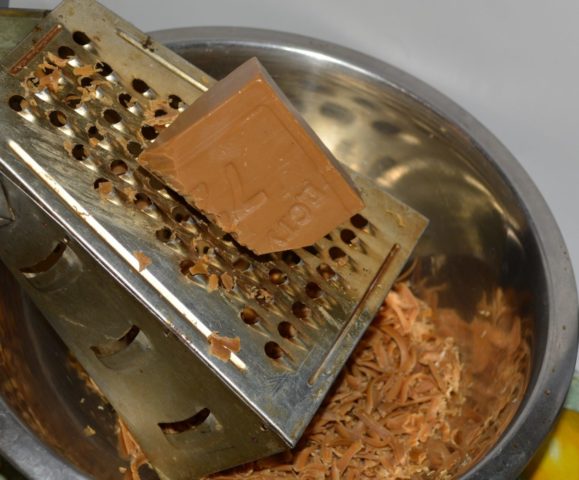

For a greater effect, add 10 tbsp to the solution. l. soda (it is safe for humans and dill, but destructive for aphids) or 200 g of vinegar per 10 liters of the finished solution.
Advice! It is not recommended to exceed the indicated dosages, as excessive acidity can cause yellowing of the dill leaves.
Advice! To make the soap easier to dissolve, it is placed in warm water in advance, and in the evening it is sprayed with a cold solution.
Ash infusion
Ash (waste from wood burning) is a good fertilizer containing Ca, K, some P and many trace elements. In addition, ash has been successfully used to get rid of pests, including aphids.
To prepare a solution from aphids, take:
- 2 glasses of ash;
- 5 liters of water.
Insist 12 hours, stirring occasionally. Filter and add 15 g of soap.
Instead of infusion, a decoction can be made from ash. Take water with ash and simmer for 40 minutes. Cool, filter and add 15 g of soap. The resulting broth can be used every day until the aphids are completely eliminated.
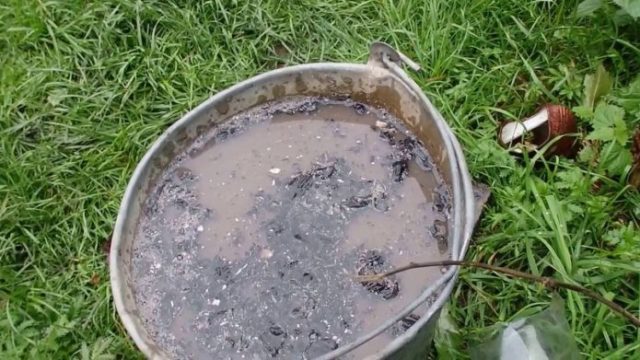

Important! Spraying is carried out after watering the dill and preferably in the evening to avoid burns on the leaves.
To get rid of aphids, ash is also used in dry form. A small bag of gauze folded in half is sewn in advance. Put 1 tablespoon in the bag. ash, red pepper (ground) and mustard (powder). The resulting mixture is crushed into plants. After 7 days, water the dill garden from the watering can.
Vinegar
Acetic acid solution is weak, but at the same time concentrated and can be hazardous to plants. Therefore, the dosage is calculated in advance so as not to burn the leaves. When using 7% vinegar, you will need 1 tsp. for 1 liter of water. Dill is sprayed with this solution every other day.
How to spray correctly?
Most often, spray bottles are used to spray dill and other herbaceous plants. The holes in them are very small, so all solutions are thoroughly filtered before processing. If this is not possible, then a conventional broom is used instead of a spray. It is moistened in a working solution and shaken vigorously over the plants. This method is ideal for processing dill with an ash solution.
Spraying efficiency depends on how long the active substance stays on the parts of the plant. In order to avoid washing off too quickly, soap (about 100 g per 1 liter) is added to the solutions and they try not to carry out processing in rainy weather. Nor should you water the dill immediately after spraying. Better to do it before him.
The best time to spray aphid dill is in the evening or early morning. It is better not to carry out this procedure in bright sunlight. The smallest droplets of liquid easily turn into lenses and cause burns on the plant.
Will fumigation help?
Fumigation will not help control aphids on open field dill. But for greenery planted in a greenhouse, this procedure is quite effective. It is not difficult to carry it out. First of all, you need to tightly close the greenhouse windows. After that, a tobacco smoke bomb is set on fire and left for 2-3 hours.
During fumigation with tobacco, they enter the greenhouse only in a respirator. Violation of this rule can lead to severe poisoning.
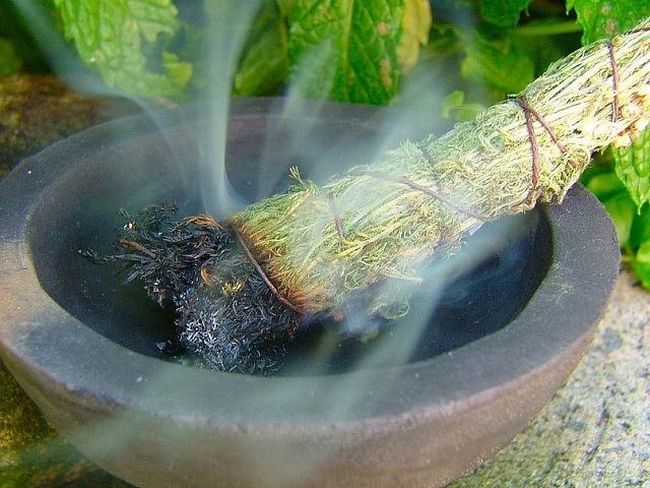

Mechanical methods of dealing with aphids
Mechanical methods of aphid control are effective only in the early stages of plant infestation, when there are still few insects. In this case, you can try to wash them off the bushes with a strong pressure of cold water or remove them from the plant with a cotton swab. Separate, severely affected, leaves and twigs are best plucked and destroyed.
Housewives who have collected contaminated greens for drying or for food also face the need to quickly wash aphids from dill. This is quite simple to do. It is enough to place the cut leaves in salt water for 25 minutes, then rinse them several times in cold water.
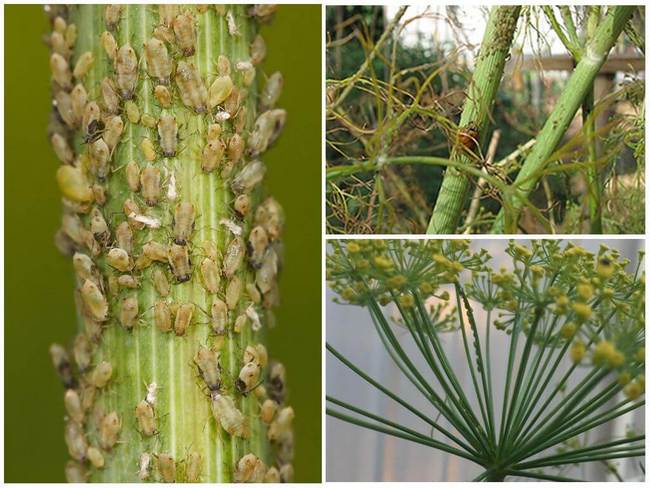

How to get rid of aphids on dill with biological products
Biological products (consisting of waste products of bacteria) are safe for humans, animals, plants and destroy insect pests.
Spraying of dill is carried out in dry, calm weather at a temperature not lower than +22 ⁰С.
Important! Biological products work best at temperatures above +25 ⁰С and are ineffective at temperatures below +18 ⁰С.
Not only dill leaves are sprayed, but also the soil under the plant.
To get rid of aphids, you can use the effective drugs Confidor, Extra, Strela.
Fitoverm is one of the most effective drugs.
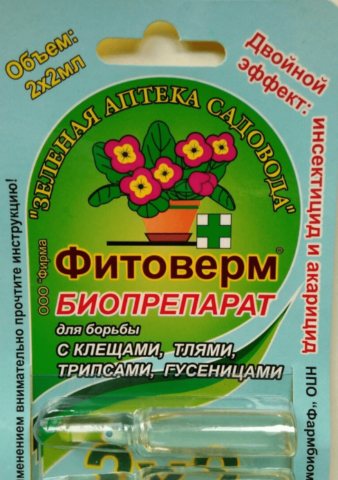

After using it, almost all pests die after 3 days, and the effect of the drug lasts for 7 days (in dry weather up to 3 weeks).
Enterobacterin has an effect even at high air temperatures.
Another effective biological product is Biotlin, which completely destroys pests within 5 days after spraying.
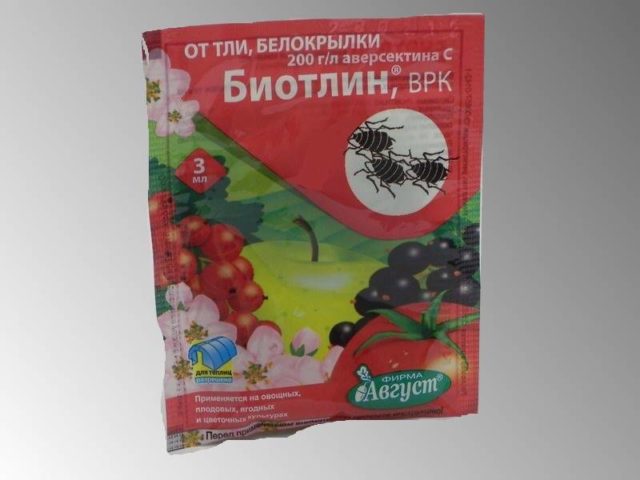

Important! After rain, spraying is repeated.
In order to use a biological product, the contents of the sachet are diluted in water following the instructions for use written on the package. Spraying is carried out in the evening after watering the dill. The result from the use of a biological product will appear 2 days after application, and dill is edible after 6 days.
Advice! Do not use the same means in the fight against aphids, since it may develop resistance to the substances that make up the drug. It is better to alternate various biological remedies with folk methods.
How to process infected dill - choose special means
Unlike fruit, berry and vegetable crops, it is not recommended to treat greens with chemicals. Getting on the surface of plants, harmful substances kill aphids, but at the same time remain unsafe for consumption for a long time.
As for biological means of fighting aphids, there is a fairly large selection of them today. Effectively fighting pests, biological products will not harm human or animal health. Here is some of them:
- Fitoverm;
- "Entobacterin";
- "Arrow";
- "Confidor Extra";
- Biotlin.
The above preparations are diluted with water in accordance with the instructions on the package. Plants are sprayed with the resulting solution using a special device or spray bottle. The waiting period can be from two to five days. At the same time, the duration of the action of the funds lasts from several days to several weeks.
In dry hot weather, the effect of biological products increases, in cloudy weather it decreases. In addition, during rains, the solution can be partially or completely washed off, therefore, during such periods, it is recommended to re-treat the plants.
Foliar top dressing with superphosphate and potassium chloride (30 g of fertilizers in a ratio of 2: 1 must be dissolved in 10 liters of water) is a harmless way to prevent the appearance and control of aphids. Dill bushes are sprayed completely. After 6-8 days, the procedure must be repeated.
Important! It is not recommended to treat the area with the same preparations, since the constant use of the same product can cause addiction to the pest and its resistance to such methods.
Chemical treatment of dill from aphids
The following chemicals are used to kill aphids on dill:
- The drug is C30. Spraying with the drug is carried out in early spring. According to the instructions for the preparation, 400 ml is diluted in 10 liters of water.
- Karbofos is a moderately toxic pesticide. 1 tbsp dissolved in 10 l of water. When spraying, pay special attention to the bottom of the sheet. After spraying, when the soil dries up a little, it is loosened and a little ash is added.
- Foliar top dressing. Take 1 tbsp. potassium chloride and 2 tbsp. superphosphate, diluted in 10 liters of water. The solution is used to treat the lower part of the leaves. The procedure is repeated a week later.
Despite the fact that the effect of chemicals lasts for about a month, their toxicity persists for the same period. Because of this, many gardeners avoid the use of chemicals in their plots and use other methods and methods to destroy aphids.
Infection routes
In addition to the migration of aphids to other plants using a winged form, some species of ants take a large part in the migration of an insect pest. They are interested in the aphids being provided with food, since they themselves feed on its sweet secretions - honeydew.Ants not only transport insects to a new place of residence, but even protect them and take their eggs to their nest for winter storage.
If in the summer some dill bushes were attacked by aphids, and there was no fight with it until the onset of winter, then in the dry bushes that were not removed from the site, the hidden eggs of the pest remained for the winter. In the spring, with the onset of heat, larvae appear from them, and then adults. To exclude such a way of infecting new greenery with aphids, you need to remove all fallen leaves, dried bushes in the fall and burn them, and spill the earth with boiling water and dig up well.
To avoid a long fight against aphids on dill, you should know what to do at the initial stage of the defeat of the dill bush. Here are the first steps to take:
- find and destroy all existing anthills on the site - it is the ants that are the main carriers of aphids in the garden area;
- when planting dill, adhere to agrotechnical rules - despite the fact that the culture is unpretentious, choose sunny, well-ventilated areas where fruits and vegetables affected by the same pests have not previously grown;
- avoid dense planting, thin out in time, remove weeds and regularly loosen the soil;
- with the onset of autumn, collect and burn bushes on which pests have been noticed;
- planting umbrella crops remotely from each other - dill, carrots, celery, parsley, parsnips.
Plants should be inspected as often as possible. When the first signs of aphid infestation appear, take all measures to prevent further spread of the pest.
Aphids settle on young shoots and leaves of the plant, they first form clusters on its inner side, as well as below the dill umbrellas. In general, they fill in those places where the surface of the leaves or stems is thinnest. Aphids stick to these places and begin to feed on dill juice.
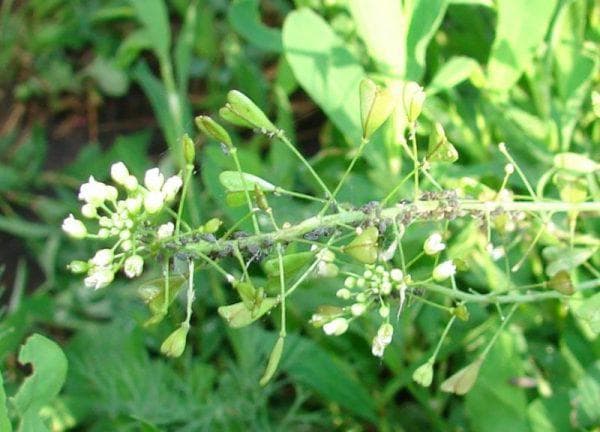

Aphids on dill
As a result, it sucks out all the nutrients in the plant, its tops are deformed from this and begin to fade. In this case, the aphid leaves behind a discharge, they are called - pad. This slimy mass not only serves as food for ants, but also is an excellent breeding ground for viral diseases and fungal diseases. You may also be interested in learning about how to deal with aphids on currants.
Signs of defeat
There are sticky spots on the leaves of dill, and some of them have whitish scales, which are easy to confuse with ash, but in fact this is an old shell, the aphid discards it from itself.
If you do not take action right away, then the plant in a few days becomes completely shrouded in aphids and its sticky secretions. With a strong degree of damage to the plant, whole colonies of this insect will become visible. Green or black representatives will be visible on the inside of the plant. But what are the signs of damage in aphids on strawberries with berries, and how you can get rid of such a problem.
Biological methods of aphid control on dill
Biological methods to get rid of aphids include:
- Allied plants, which are divided into repelling and attractive. Plants that repel are herbs with a strong odor: coriander, onion, lavender, garlic, mint, mustard, basil, chamomile. It is recommended to plant these crops next to dill. Attracting plants include crops that attract aphids. These include: petunia, mallow, begonia, poppy, and beans. They are planted away from the garden plot.
- Insects and birds are natural enemies of garden pests, including aphids. Insects that feed on aphids: ladybugs, lacewings, hoverflies, some types of wasps, predatory bugs. To attract these insects to the site, plant carrots, parsley, daisies.
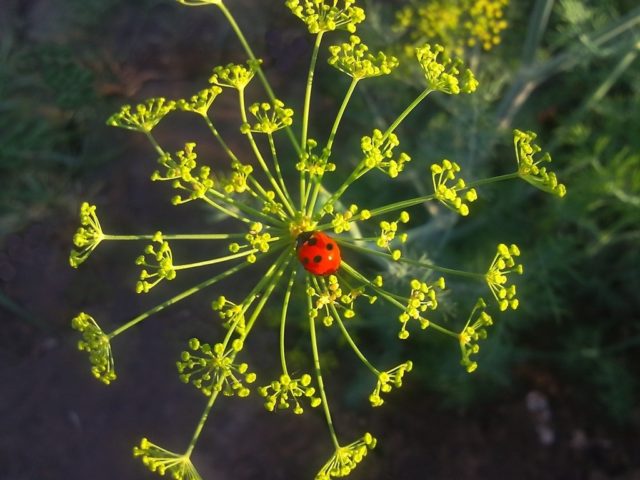

- Aphids are prey for small birds, such as titmice, bloodworms, wrens, robins and linnet, so it is advisable to place a feeder on the site.
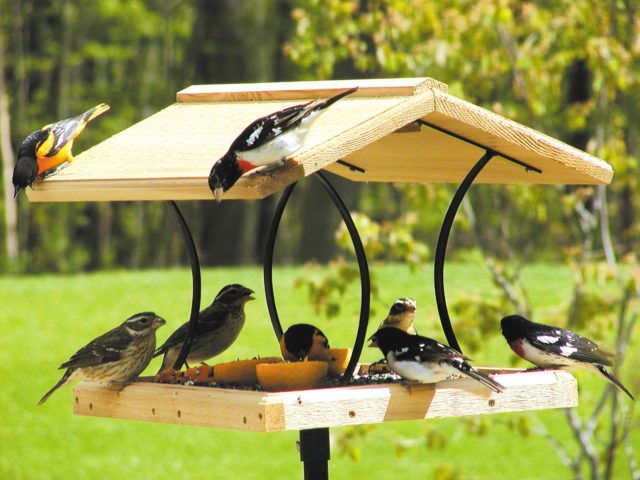

- Lizards and hedgehogs are also helpers in the fight against aphids.
Important! When attracting insects and birds to the site, it is better to abandon the use of chemicals.
Getting rid of insects on cut greens
The problem of how to wash off aphids from cut dill is not particularly difficult. At home, you need to put greens in a deep bowl, pour with salt water. Leave it on for a few minutes. Drain the liquid, rinse the herbs under running water.
On a note!
You can change the water several times. To make sure the greenery is clean, you need to carefully examine it. Aphids do not lay eggs on young shoots.
Dill in most cases acts as an effective remedy for aphids, according to folk recipes. It is planted to attract natural enemies of aphids. But the culture itself often suffers from the invasion of small pests. It is necessary to take care of the cleanliness of the land plot since autumn.
Prevention measures
To prevent the appearance of aphids on plants, follow certain rules:
- For planting dill, choose sunny and well-ventilated areas. The soil should not be too wet.
- When choosing a place for planting, you should abandon the neighborhood with crops such as parsnips, parsley, dill, carrots.
- Dill's best neighbors are plants with pungent odors: onions, garlic, coriander, rosemary, mint, and basil.
- It is necessary to thin out shoots and remove weeds in a timely manner.
- Dill requires moderate watering.
- Top dressing is carried out with a solution of potassium and superphosphate in a ratio of 1: 2, which will improve the protection of dill.
- In the fall, the remains of plants are carefully removed from the site, since it is there that aphids winter.
- A couple of times a week, dill bushes are examined for aphids or other pests and diseases.
- In the spring, the site is being prepared for planting. To do this, they remove garbage, weeds and decontaminate the soil. The day before planting the dill, the selected area is poured with boiling water or, in hot weather, covered with polyethylene for 3 days.
- Anthills located on the site are periodically poured with boiling water.
- If ladybirds are found in the garden, they are taken to the garden with dill.
- It is not advisable to plant dill near bird cherry, viburnum or linden.
If you follow these recommendations, you can grow healthy and healthy dill.
Preventive actions
As with other pests, it is much easier to prevent aphids than to try to get rid of them. Often it is enough for this to follow the basic rules of dill agricultural technology:
- Choosing a suitable landing site. Dill prefers sunny, well-ventilated areas. Aphids, on the other hand, do not tolerate constant draft poorly.
- Compliance with crop rotation. You can not plant dill after other representatives of the umbrella (carrots, parsley, celery, caraway seeds), as they are affected by the same types of aphids.
- Competent selection of neighbors. Strongly smelling plants planted next to dill not only scare away aphids, but also attract its worst enemy - the ladybug. And a pear growing nearby, on the contrary, will make the infection of the beds almost inevitable.
- Timely seedling thinning. First of all, aphids appear on stretched and weakened plants, and the lack of ventilation makes her life on dill very comfortable.
- Weeding regularly. Aphids often settle on weeds, infecting dill bushes over time.
- Frequent inspection of the underside of the dill leaves. It is here that aphids most often settle. Noticing the still single individuals in time, you can easily get rid of them.
- Autumn deep digging of the soil. This event will not allow aphid larvae to overwinter under a layer of snow and soil.
- Destruction of anthills. It is the ants that most often become the source of aphids on the site.They drag this insect from plant to plant and keep its larvae in their nests in winter. Therefore, victory over ants also means victory over aphids.


If the dill beds are constantly attacked by aphids, then they can be covered with white spunbond with a density of no more than 30 g / m2. Such material will well protect greens from insects, without depriving it of sunlight.
Aphids are a dangerous pest of dill. But even a not too experienced gardener will be able to protect the beds from its invasion, observing the simple rules of prevention. If it was not possible to avoid the appearance of aphids, then folk methods of dealing with this insect that are safe for humans will come to the rescue.
What to do to prevent the occurrence?
Compliance with crop rotation rules will also help reduce the risk of aphid infestation. So, it is not recommended to plant dill after carrots, parsley or celery. And also other types of greenery affected by aphids.
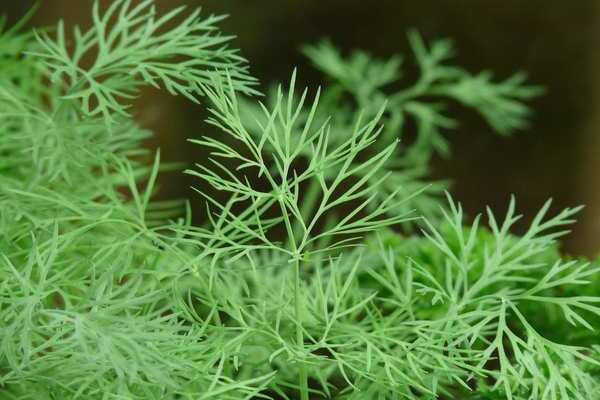

Neighborhood with such cultures is also undesirable. But the alternation of plantings of dill with beds of onions and garlic, on the contrary, will protect them from infection. Placement of herbs in the neighborhood will also be successful. For example, fennel, basil, or mint.
Many ornamental crops have a phintocidal effect. Therefore, they are able to drive away aphids. For example, marigolds or chamomile. Legumes adjacent to dill and some types of flowers (mallow, begonia) can distract aphids from greenery.
It is extremely dangerous to plant dill next to viburnum, linden or bird cherry. Because these plants are extremely attractive to aphids. And they can become the starting point of the invasion of pests.
Another method of protecting dill from aphids is to create a bed cover made of nonwoven fabric. He will not allow pests to get on the plants. And its light weight won't hurt the stems.
It is unlikely that it will be possible to completely protect the garden from the pest, but reducing the risks is quite within your reach. A few simple rules will help with this:
- Choose the garden beds correctly: greenery likes areas with good ventilation and lighting, and aphids do not tolerate drafts.
- You cannot plant the same vegetables for several years in a row in one place - this is how the land is depleted. It is forbidden to plant dill after umbrella plants (celery, parsley, carrots, caraway seeds), since they have the same set of pests.
- The landing pattern is not a whim, but a necessity. Do not be tempted to plant dill as thick as possible: young shoots do not interfere with each other, but adults are getting cramped, there is not enough water and sun. Therefore, leave 25-30 centimeters between the dill beds.
- Bring your allies to your side against aphids - ladybirds. To do this, plant on the site plants that attract them: basil, garlic, onions, marigolds.
- Make it a rule to regularly weed the soil: this procedure will not only help the roots to breathe and develop properly, but also destroy some of the aphids (since they like to settle in such secluded places).
- As a preventive measure, spray the area with folk remedies against aphids.
And, of course, regularly inspect your garden for pests and clean it of weeds and plant debris in time.
Attention! If your garden is at risk and aphids appear on it every year, try covering the dill beds with spunbond.
It is a lightweight, but strong and durable covering material created by melting polymer fibers, withstands both extremely high and low temperatures, is well transmitted to light and air, does not emit toxic substances and is affordable.
Dill occupies a special, honorable place in medicine, cooking and cosmetics, at the same time it is unpretentious in care and can be grown both in the garden and at home. But aphids are a serious enemy, and if you want to reap a record harvest, pleasing both with the splendor of the greenery and with a pleasant aroma, learn the rules of pest control by heart.And do not forget about preventive measures - then your garden will only cause you pleasant impressions.
How to recognize a pest?
There are several species of aphids parasitizing on dill, and each species is capable of causing serious damage to the culture, up to and including death.
Signs of aphids are easy to spot with the naked eye:
- On the tops of dill (young growths), swarming colonies of insects are visible, they are also on the lower part of the stem.
- The dill begins to turn yellow and lag behind in growth, its top withers and tilts to the side.
- A white sticky bloom appears on the leaves - sweet honeydew, gradually turning into a black bloom.
- Aphids settle not only on the leaves, but also on the roots.
Dill aphids can not only damage the plant, but also completely destroy it. The pest chooses the back side of the leaves or the area of flower umbrellas as a place for its location. It feeds on dill juice, therefore, in places where aphids operated, the growth of culture stops. In the process of vital activity, the insect leaves sticky marks on the body of dill.
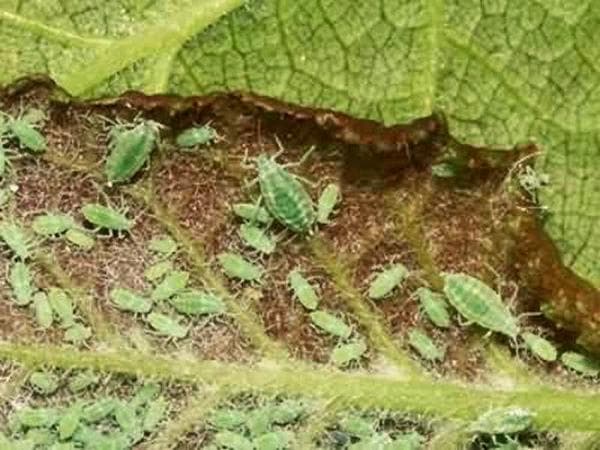

If aphids appear on dill, then you can fight it in the following ways:
- Biological. Least costly. Based on the use of natural enemies. These can be birds, insects or plants, the smell of which will scare away the pest.
- Chemical. It is possible to destroy aphids with the help of special preparations quickly and permanently. In most cases, solutions or powders of systemic, intestinal action are used.
- Folk remedies. They are simple recipes from those components that are always available in every summer cottage. In addition, the method is notable for its safety for people, animals and plants around it.
How exactly to deal with aphids on dill should be chosen based on the degree of damage to the pest and the available means.
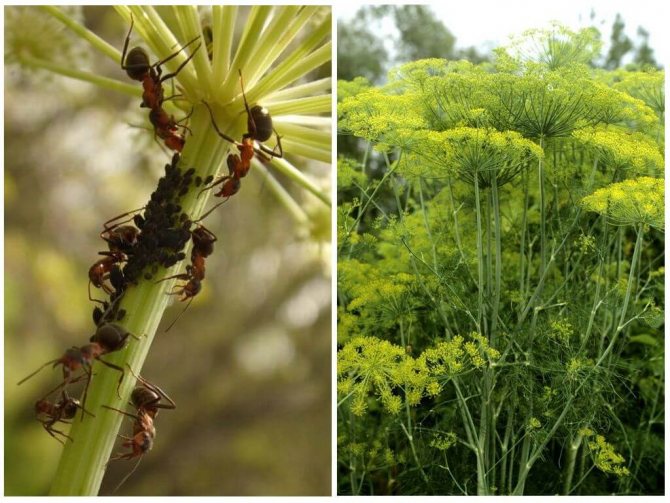

Aphids on dill
Safe wrestling without the use of chemicals
Aphids on dill
One of the most affordable ways to kill aphids is to simply water the plants abundantly. Under the stream of water, small individuals simply cannot resist and will be washed away. Difficulties can arise with hitting accuracy. It is important to correctly direct the stream of the jet in order to reach even the most hidden individuals.
You can also wash plants affected by aphids with a special solution. For its preparation, you will need lemon zest and onion peels. Mix the ingredients and pour boiling water over. Insist for at least 12 hours. Dilute in half with water and spray with dill.
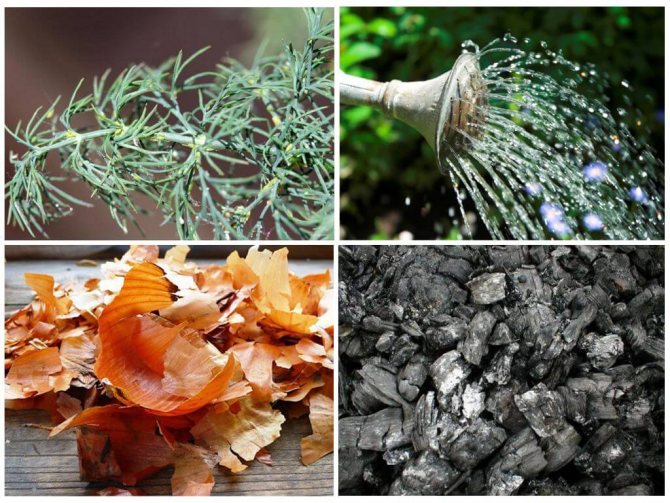

Insect control methods
Aphids pierce the skin of the leaf with a sharp proboscis and suck the juice from the cells of the plant. This weakens them, disrupts internal circulation, and slows down photosynthesis. In addition, it emits poison, due to which the foliage curls and turns yellow, the shoots stop growing, and the stems bend. Aphid tracks - sweet paths - are an excellent area for fungus to appear, and also prevent the plant from fully breathing.
Important! If the gardener does not take any measures, the aphid will give several tens of generations (up to 50) over the summer and cause significant damage to the site.
Aphid saliva carries a lot of viruses:
- cercosporosis;
- verticillary wilting;
- powdery mildew;
- phomosis.
Some of the diseases cannot be cured, and the culture is destroyed (for more information about the diseases and pests of dill, see here).
Tool number 2: soap-vinegar solutions
When it comes to processing dill, even among the folk remedies for aphids, you have to choose the safest ones. For example, you should exclude recipes containing natural poisons - infusions of pyrethrum, celandine, etc. They do not penetrate deeply into plant tissues, but if greens are poorly washed, they can still enter the human digestive tract.
“I was pleasantly surprised by ammonia. It would seem that the breeding is scanty, and the aphids escaped from the dill almost immediately. And the dill himself liked this treatment, he quickly turned green, fluffed the leaves. In general, I will continue to use this recipe ”(Yulia, Yaroslavl).
To treat aphid dill with ammonia, you must prepare an aqueous solution:
- take 5 liters of clean water at room temperature;
- quickly mix 1 tablespoon of ammonia into the water;
- pour the solution into a garden sprayer and use immediately.
It is impossible to store this product, it quickly loses its properties. Therefore, you need to prepare it immediately before use.
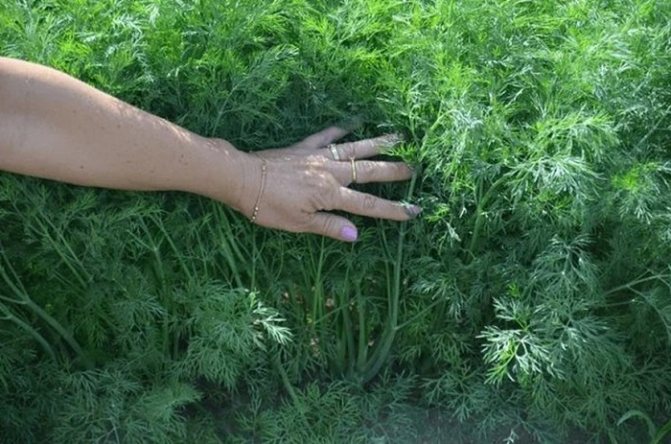

If the dill is planted densely, it is quite difficult to carry out aphid treatment. It is necessary to try to spray each plant, and not along the tops, but to the very root.
| Table vinegar aphid remedy | Apple cider vinegar aphid remedy |
| · Take 3 liters of water at room temperature; · Pour 3 teaspoons of 9% vinegar into it; · Dissolve some soap shavings in acidified water. | · Take 3 liters of water at room temperature; Dissolve 3 tablespoons of apple cider vinegar in it; · Add soap shavings. |
You should not add a lot of soap to such solutions. In this case, it just acts as an adhesive, helping the solution to better adhere to the leaves. If the solution is very soapy, it will be difficult to wash it off the collected dill.
Tool # 4: infusion of garlic
| Recipe | Description |
| "Cold" | · Take 2 full glasses of ash and sift through cheesecloth; 5 liters of cold water are poured into the bucket, prepared ash is intervened; · The bucket is left in a sunny place for a day; · Laundry or liquid soap is added to the infusion. |
| "Hot" | · 2 full glasses of ash mix in 1 liter of boiling water; · The solution is wrapped up and infused for 1 hour; · The resulting infusion is brought with cold water to a volume of 5 liters; · Laundry or liquid soap is added. |
Such ash infusions should not be poured into garden sprayers, as ash particles quickly disable the equipment. Therefore, the processing of dill is carried out in the old way - using a broom. The broom is dipped into the bucket and the infusion is shaken off onto the plants.
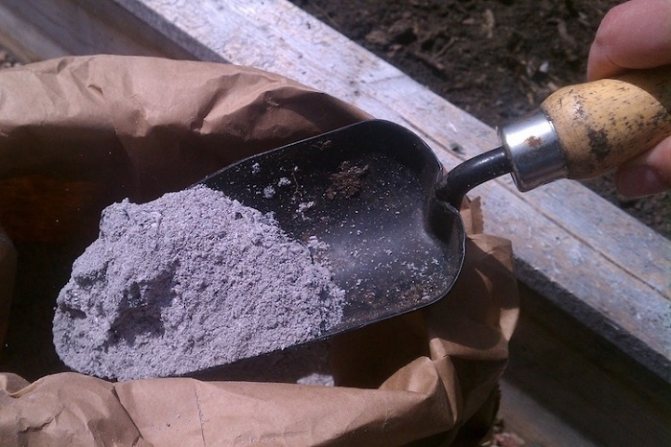

Ash infusions are less effective against aphids than other remedies. Therefore, it is advisable to combine both methods of treatment - first spray, and then dusting. After rain or watering, it is necessary to process the dill again, otherwise the aphid will quickly return.
One of the best folk remedies for aphid control is garlic treatments. Garlic contains substances that irritate the covering tissues of aphids. In addition, its essential oils act as repellents, making the plants "unpleasant" for the pest.
You can prepare a garlic infusion for processing dill as follows:
- unpeeled garlic heads are taken and passed through a meat grinder;
- 1 glass of the resulting gruel is poured with 3 liters of cold water;
- the container is covered and left in a dark place for 2 days.
Garlic infusion can be kept longer - up to 5 days. The better it is infused, the greater its repellent effect will be.
Infusion from aphids is prepared most often from onions. But if onion arrows are available, they can also be used:
- the heads and arrows of the onion, together with the husk, are chopped with a knife;
- everything is folded into a bucket and filled with water at the rate of 1 liter for every 50 g of onion raw materials;
- the bucket is covered with a lid and allowed to stand for 10-12 hours;
- the infusion is passed through a cloth and poured into a sprayer.
Applying this tool, you need to understand that it scares away well, but does not eradicate aphids. Therefore, you will have to perform repeated treatments quite often - about 1 time in 3-4 days.
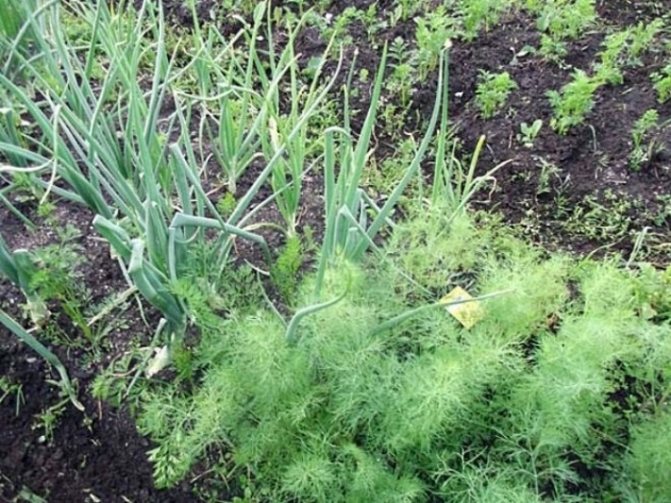

Joint planting in a common garden bed with onions completely eliminates the problems with the appearance of aphids on dill. This natural pest control method should not be ignored.
Growing for seeds
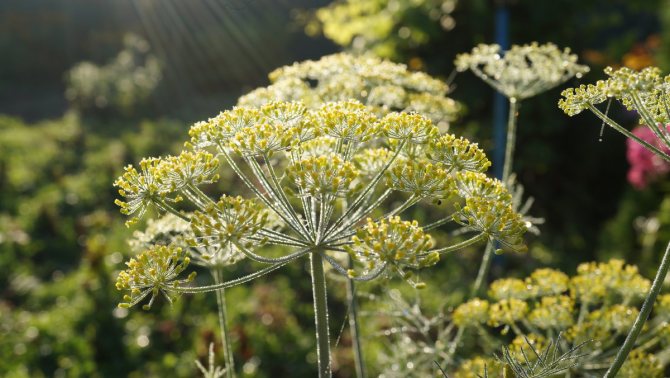

To obtain high-quality dill seeds, early ripening varieties are selected and sown before winter, in mid-autumn. Crops are mulched with peat or humus.Such preparation ensures earlier flowering of the plant - 2 weeks ahead of schedule. Thanks to this, the future seed has time to ripen.
Umbrella inflorescences are harvested at the end of summer, when the seeds dry up, turn brown and easily separate from the umbrella. Dried inflorescences in a well-ventilated place "upside down". Seed material retains its germination capacity for 3-4 years.
Treatment and prevention of dill diseases
Disease prevention takes far less time and effort from the gardener than the fight against them. Therefore, it is more expedient to focus on precisely these simple measures.
First of all, you need to correctly choose a landing site. Many pathogenic fungi prefer high humidity, stale air, and coolness. Therefore, dill is sown in open sunny areas. The plant is not afraid of winds and drafts.
Observance of crop rotation is very important. It is advisable to grow dill in the same place for a maximum of 2-3 years. Then the bed must be moved to a new place. Good predecessors for culture are plants from the Pumpkin family, Legumes, Solanaceae. You should not plant dill after carrots, beets (ordinary and leafy), garden strawberries, and other umbrella. In general, beds with these crops are placed as far away from each other as possible.
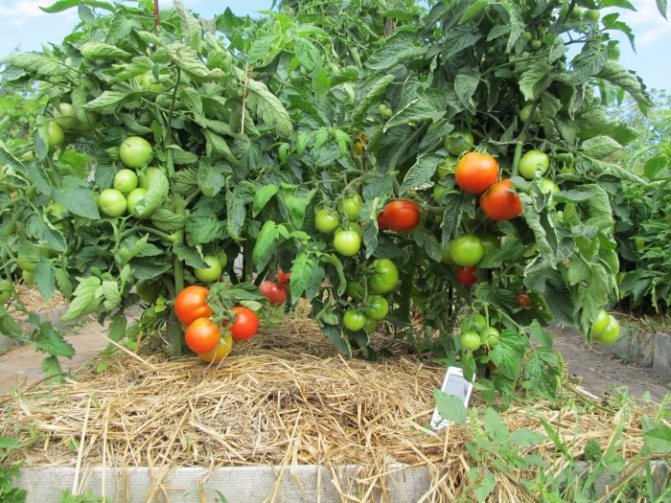

Tomatoes are bad predecessors for dill, these crops have a common disease - verticilliasis
Pre-planting seed treatment is also required. The easiest way is to soak them for 15–20 minutes in hot (45–50 ° C) water, and then immerse them in cold water for half an hour. You can also use a bright pink solution of potassium permanganate for disinfection, but the processing time in this case increases to 5-6 hours. Biofungicides have a similar effect. In the solution prepared according to the instructions, the seeds are etched for 10-15 minutes, then washed in cool running water and dried to a state of flowability.
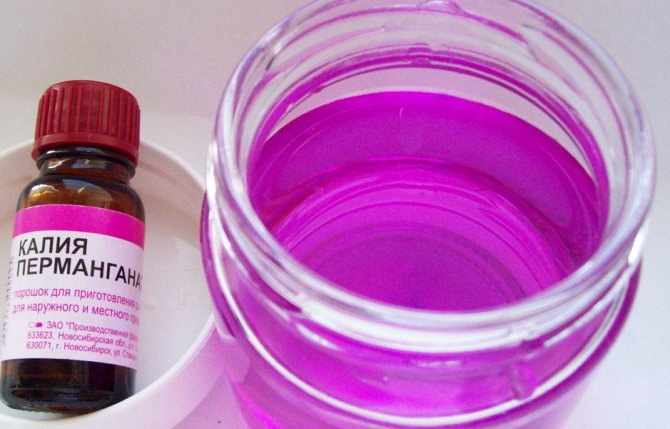

Potassium permanganate solution is one of the most common disinfectants
Treatment with biostimulants has a positive effect on plant immunity. This also applies to folk remedies (aloe juice, succinic acid, honey diluted with water), and to store preparations (Epin, Kornevin, Zircon, potassium humate).
Seeds are sown in the garden bed as evenly as possible, avoiding thickening of the plantings. Overcrowding prevents plants from developing normally and makes them more vulnerable. Diseases and pests in this case spread much faster.
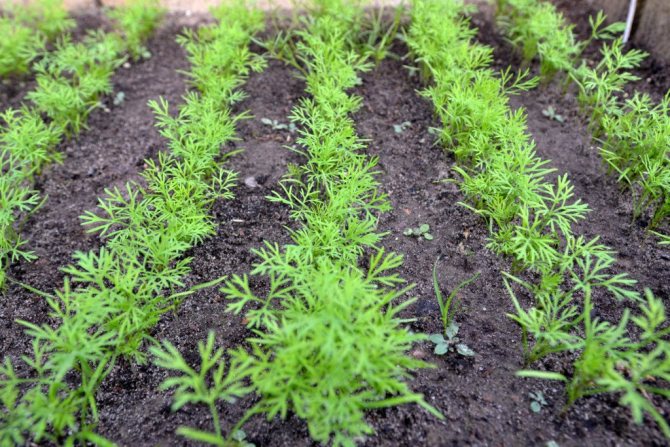

Dill is sown on the garden bed as evenly as possible, avoiding thickening of the plantings
The garden bed must be weeded and loosened regularly. And in the fall, they dig up and remove all the plant debris. It needs to be burned as quickly as possible, and not stored somewhere in the far corner of the site. On the roots of plants, in dried greenery, eggs and larvae of many pests, spores of pathogenic fungi successfully winter.
During the active growing season, fertilizing with potash and phosphorus fertilizers is useful. In the correct dosage, these macronutrients strengthen plant immunity. Boron has a similar effect. But to be zealous with nitrogen, on the contrary, is not worth it.
Diseases typical of dill
Dill naturally has good immunity. This dignity was passed on to the varieties and hybrids bred by breeding. However, there are factors that contribute to the development of diseases, for example, cool rainy weather or dense plantings. In favorable conditions, this culture can also suffer from pathogenic fungi. Dill still does not have absolute protection against diseases.
Powdery mildew
One of the most common diseases affecting the vast majority of horticultural crops. Dill can also be affected by this fungus. Its development is facilitated by high humidity (70% and more) and a temperature that is rather low for summer (17–20 ° C). Spores of the pathogenic fungus are carried by aphids, ants, and many flying insects.
The first sign of powdery mildew infection is the leaves, as if powdered with fine whitish or grayish powder. Gradually, this plaque "thickens", its color changes to dark brown. Affected tissues dry up and die off. In principle, such dill can be eaten, but its taste greatly deteriorates and its characteristic aroma is practically lost.
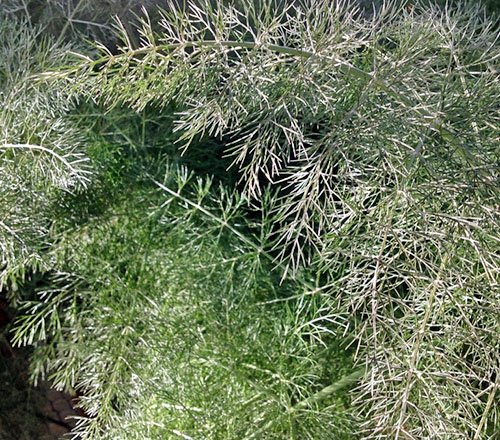

Powdery mildew is one of the most common diseases of horticultural crops; dill can also suffer from it.
To prevent planting of dill, it is treated with a pale pink solution of potassium permanganate diluted in water with colloidal sulfur (3-5 g / l). It is useful to periodically add potassium permanganate to water for irrigation. It is advisable to carry out such treatments at least once every 1.5–2 weeks.
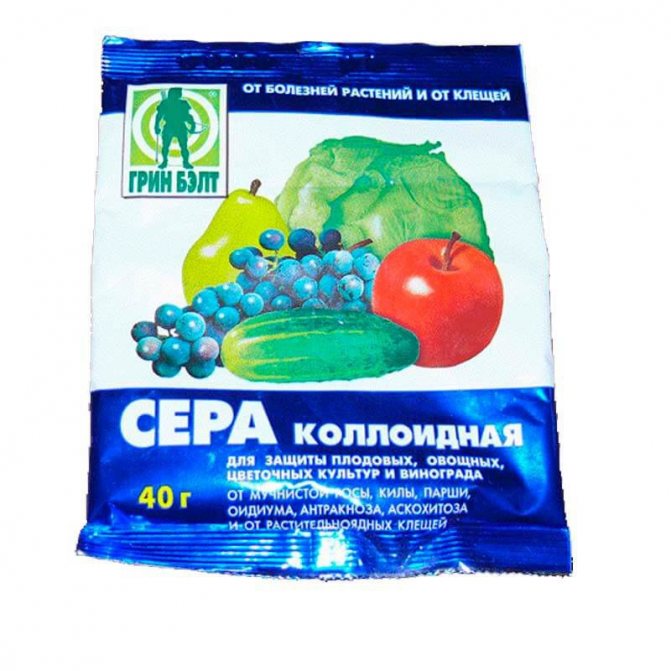

Treatment of plantings with a solution of colloidal sulfur - effective prevention of powdery mildew
Having found characteristic symptoms indicating an early stage of the development of the disease, dill and the substrate in the garden are sprayed with an infusion of onion or garlic arrows, a solution of mustard powder. If so far only individual leaves are affected by the fungus, they can simply be removed, and the whole plant can be treated with foam of green potash, tar or laundry soap. Since the fungus does not tolerate an acidic environment, a good effect is given by spraying with diluted water in a ratio of 1:10 with kefir or milk whey with the addition of iodine (a drop per liter of solution).
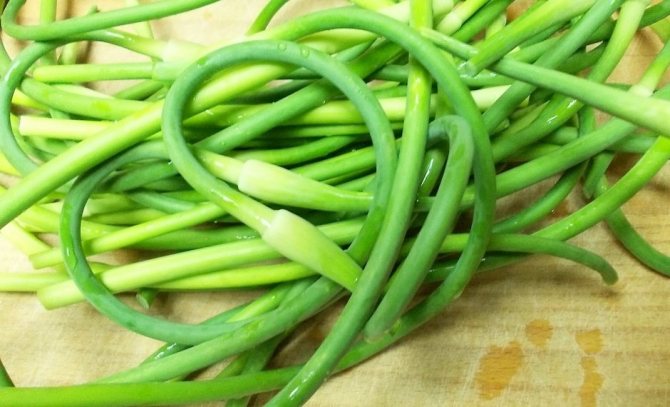

Garlic produces phytoncides that destroy disease-causing fungi
In severe cases, copper-containing preparations are used - fungicides. Although this is very undesirable for any greenery, because most often it is eaten without heat treatment, and sometimes even unwashed. If you have a choice, preference should be given to drugs of biological origin, which do not harm either human health or the natural environment. These are, for example, Strobi, Gamair, Mikosan, Alirin-B. Usually 2-3 procedures are enough with an interval of 5-6 days. Although there are gardeners who prefer "reliable proven" means, such as Bordeaux liquid and copper sulfate. Another option is antibiotics. In a liter of water, you need to dissolve 1-2 g of powder of Penicillin, Streptomycin and Terramycin.
Video: methods of dealing with powdery mildew
Peronosporosis
Downy mildew is recognized by blurry lime-colored spots on the face of the leaf blade. They seem to be "oily", quickly change color to dark green and then to brown. The wrong side of the leaf is covered with a continuous layer of greyish-purple bloom. Gradually these spots grow, merge into one. The leaves affected by the fungus whip, shrivel and dry, disintegrate into separate fragments. Greens on dill bushes affected by downy mildew become pale, almost tasteless. The disease is capable of destroying a plant completely in a very short period of time, literally in two or three days. Spores of the pathogenic fungus are carried by aphids, whiteflies. Favorable conditions for the development of downy mildew are sudden changes in day and night temperatures, frequent precipitation (as well as watering with cold water).
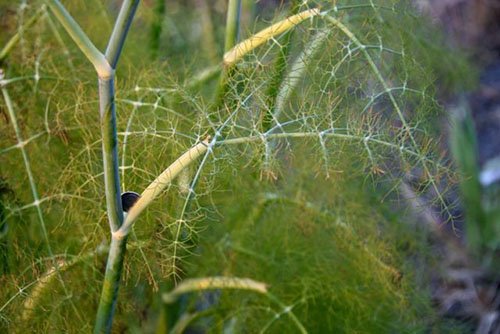

Peronosporosis destroys the plant very quickly, often the gardener does not even have time to take action
To protect plantings from peronosporosis, dill and soil in the garden are sprinkled with chalk crushed to a powdery state or sifted wood ash. It is useful to embed the same substances in the soil in the process of loosening. In the spring, shortly before the emergence of seedlings from seeds or before planting them in the garden, it is recommended to shed the selected area with a solution of Integral, Alirin-B, Gaupsin. Once a month during the active growing season, you can use boric acid diluted with water (1 g / l).
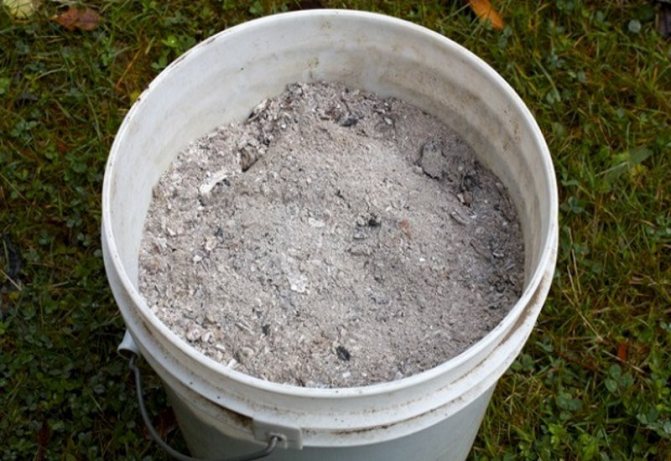

Wood ash - effective protection against many disease-causing fungi
Folk remedies in the fight against the disease are not very effective even in the early stages of its development. At best, they can only slightly slow down the process. To do this, use infusions of green plants that produce phytoncides - onions, garlic, wormwood, yarrow.
If the disease is not noticed on time and has gone far in its development, the preparations Fitosporin-M, Planriz, Baylon, Baikal-EM are used. Usually, two treatments with an interval of 12-15 days are sufficient. But drugs of biological origin sometimes do not give the desired effect. In this case, you will have to resort to "heavy artillery" - this is, for example, Acrobat-MC, Oksikhom, Ridomil-Gold. These drugs pose a danger to human and animal health, therefore, before spraying, you must take care of personal protective equipment (at least wear a respirator and gloves). You cannot eat dill from a processed garden for at least a month.
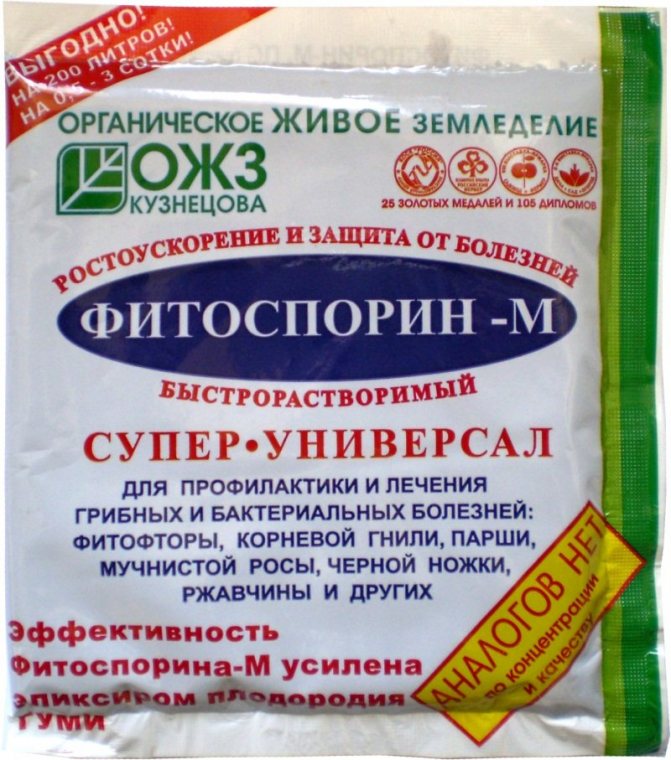

Fitosporin-M is one of the most popular fungicides of biological origin among gardeners.
There is also another radical way to combat the disease. All plants from the site that could turn up to be infected are pulled out and burned. The soil is dug up or well loosened, then spilled with boiling water, a dark raspberry solution of potassium permanganate or 5% copper sulfate.
Phomoz (dry rot)
This disease is more typical for carrots, but dill also affects, because these plants belong to the same family. Its development is promoted by heat and high humidity. Another factor contributing to infection is a deficiency of boron in the soil.
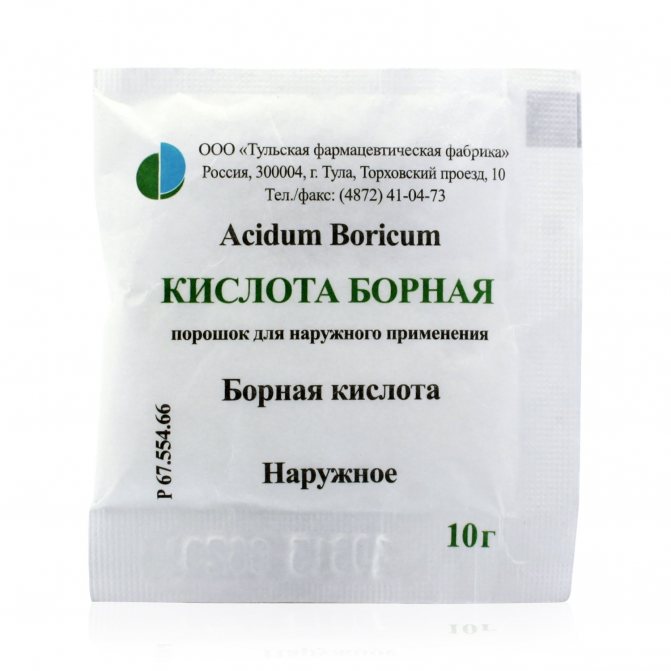

With a deficiency of boron in the soil, the risk of developing phomosis is much higher.
Small brownish or grayish-beige spots with a darker brown border appear on the leaves. The wrong side takes on an unnatural bluish-purple tint. The lowermost leaves may turn pinkish completely. The affected areas of tissue gradually collapse and die off, the dill bush practically stops developing, the leaves turn pale. If you pull it out of the ground, you can see depressed brown "ulcers" on the roots. The tissues underneath them turn to dust.


Phomosis often affects roots and berries, but dill can also suffer from this disease.
To prevent the development of phomosis, the area before sowing dill is spilled with a 0.5% solution of Tiram, Fundazol or Rovral. To strengthen the immunity of plants, fertilizers containing potassium and phosphorus are introduced into the soil. But nitrogen, on the contrary, weakens them, so you should not be zealous with it. The same applies to fresh manure. Also, during the growing season, it is desirable to carry out 2-3 foliar feeding with boric acid solution. And borax can be added to the soil in the garden every 4–5 years.
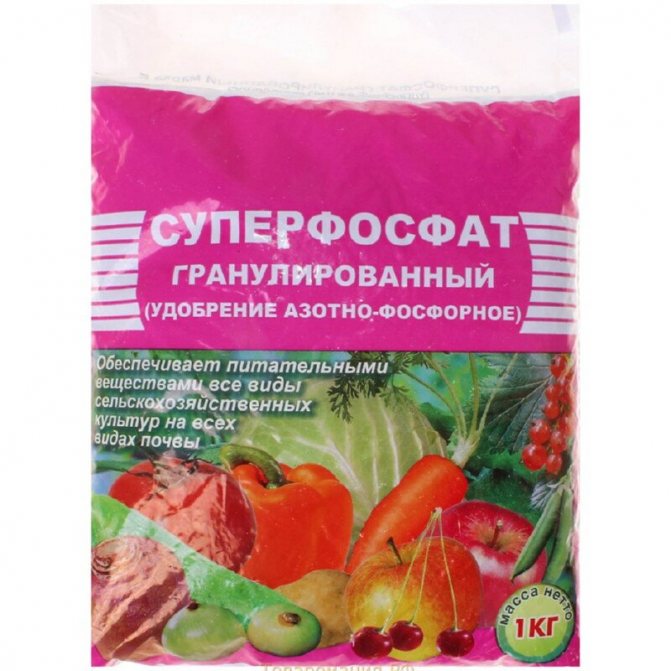

Phosphate and potassium fertilizers in the right dosage have a positive effect on plant immunity
Phomaosis is practically not amenable to treatment. This also applies to folk remedies and chemicals. It will be easier to remove infected specimens from the garden and disinfect the soil in this place.
Cercosporiasis
A dangerous fungal disease that affects the entire plant and dramatically inhibits its development. The pathogenic fungus interferes with the normal course of the photosynthesis process, on which the dill bush must now spend all its energy to the detriment of the formation of new leaves. Coolness (temperature not higher than 20 ° C) and high humidity contribute to the development of cercosporia.
Multiple small (2–4 mm in diameter) brownish spots with a brick-colored border appear on the leaves. They feel velvety to the touch. They rapidly increase in diameter, spreading over the entire leaf plate. Affected leaves rot and die off.
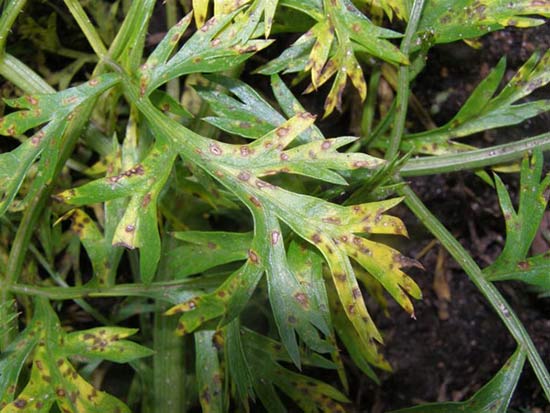

There are currently no special agents for the treatment of cercospora, so special attention should be paid to prevention
For prevention and at the first signs of the development of the disease, dill is sprayed with 1% Bordeaux liquid or a solution of the drugs Abacus, Rex-Duo, Dual-Gold. If the weather is favorable for the fungus outside, the treatment can be repeated after 2.5–3 weeks. In hot weather and with prolonged drought, this is not necessary. It is also useful to increase the immunity of dill by applying phosphorus and potassium fertilizers in doses not exceeding the recommended rate.
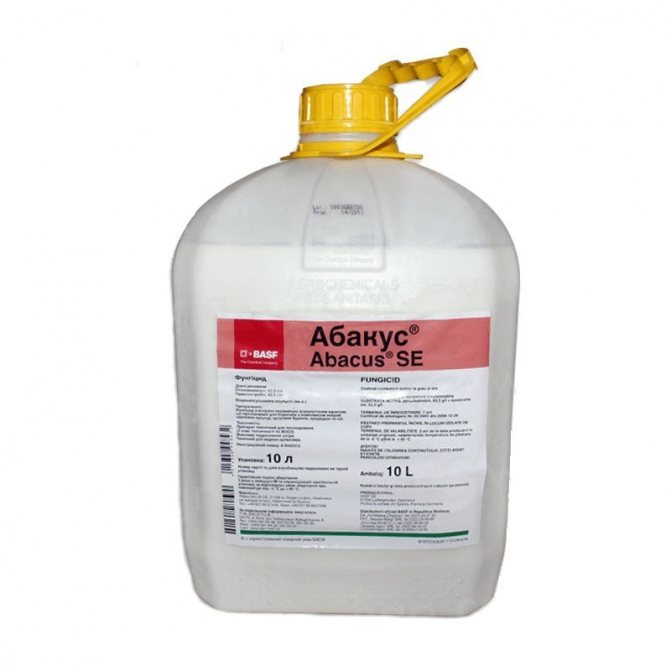

Abacus is one of the drugs used to prevent cercosporia
In addition to "cultivated" plants, cercosporium disease can affect quinoa, sow thistle, dandelions. Therefore, special attention must be paid to weed control.
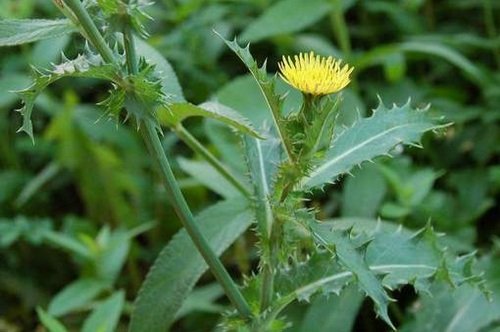

Sow thistle is one of the many weeds that the cercosporium fungus uses as a "base"
Fusarium
Fusarium is a very dangerous disease that affects the vast majority of horticultural crops. The fungus, parasitizing in plant tissues, saturates them with poisonous secretions. Accordingly, fruits, berries, roots, vegetables, herbs become unsuitable for eating. Most often, the disease develops in light acidified soil. But in a heavy, clayey substrate - almost never. Loves fungus and heat, high humidity. Therefore, greenhouse dill is at particular risk. Spores are carried by many insects that feed on plant sap - aphids, spider mites, whiteflies.
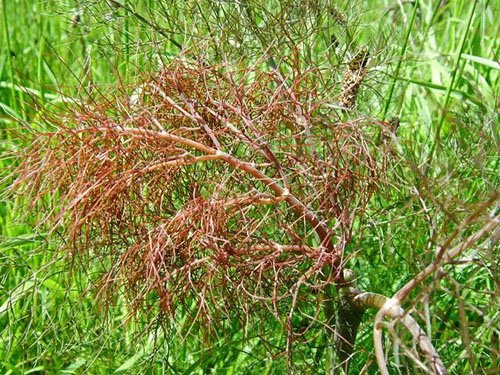

On the aerial part of the plant, the symptoms characteristic of fusarium appear when the disease has already gone far enough
Another risk factor is an excess of chlorine in the soil. Therefore, it is better to refuse fertilizers containing this microelement. For example, it is undesirable to feed dill with potassium chloride. But calcium does not like the pathogenic fungus. When preparing the bed, it is advisable to add dolomite flour, chalk crushed to a powdery state, or chicken egg shells into the soil.
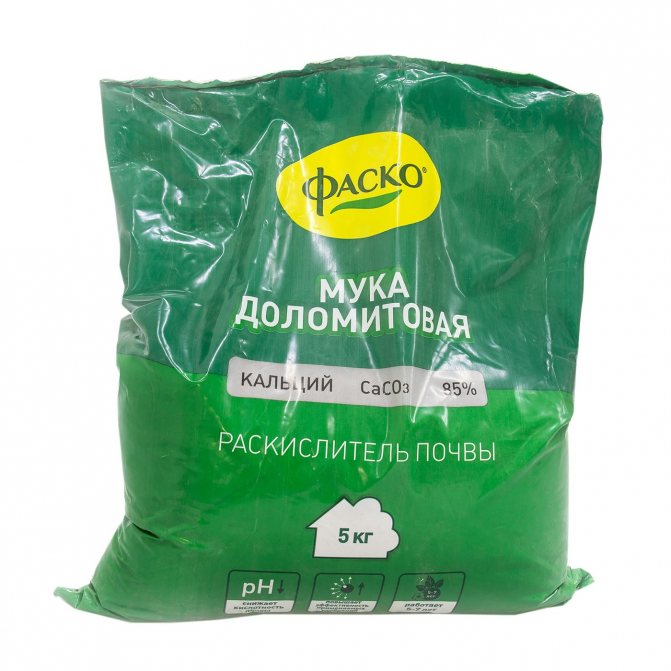

Dolomite flour is a natural soil deoxidizer, when the dosage is observed, it does not have any side effects
The leaves of dill bushes affected by fusarium lose their tone, turn yellow and wither. "Watery" areas appear on them. In the vast majority of cases, the process goes from bottom to top. On the cuts of the stems, ring-shaped dark, almost black blotches are clearly visible - clogged vessels. A layer of pinkish-white mold may develop closer to the roots.
The disease is also dangerous because it does not manifest itself in any way for about a month - this is the incubation period. And then the process of wilting proceeds almost at lightning speed, 4-7 days are enough for the plant to die.
An effective preventive measure is weekly watering of the soil with a pale pink solution of potassium permanganate. You can also use an infusion of onion peel or wood ash (about 0.5 liters of raw materials per 3 liters of boiling water).
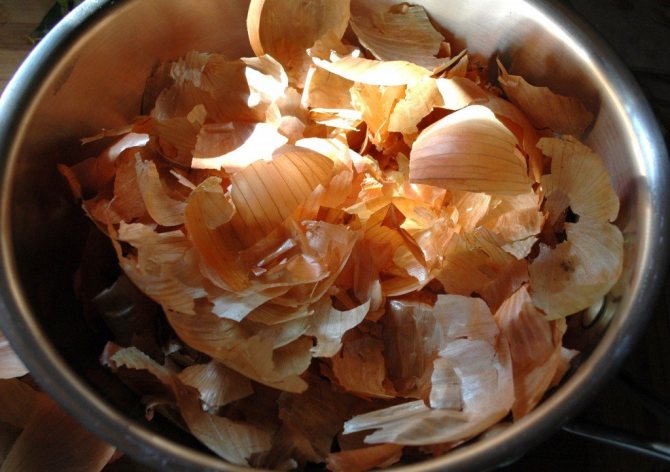

Infusion of onion peels - effective prevention of fusarium
Folk remedies in the fight against fusarium are ineffective. It is better not to waste time and immediately use fungicides - Fitolavin, Agat-25K, Vektru, Vitaros. These are drugs of biological origin. In the absence of the desired result, the treatment is repeated, but more "serious" means are already used - Oxyhom, Bravo, Raek, Discor. It is advisable to spray only those plants that appear to be uninfected. Those who show characteristic symptoms can no longer be saved. They are pulled out of the garden and burned as quickly as possible. It is strictly forbidden to send them to the compost heap if you do not want to then infect the whole vegetable garden.
Verticilliasis
Berry bushes and root crops are more likely to suffer from verticillary wilting, but dill is also at risk. A feature of the disease is a long (2-3 years) incubation period, during which its pathogen does not manifest itself in any way, developing in the soil. High temperature (25 ° C and more) contributes to the appearance of verticillus, especially in combination with low air humidity.
Recent Entries
7 varieties of garden roses with delicate lilac flowers 5 ornamental shrubs that are well suited for decorating borders and low hedges 5 varieties of white strawberries, the taste of which is even more surprising than the unusual appearance
The fungus clogs the vessels that deliver moisture from the roots of the aerial part of the plant, at the same time it releases toxic substances that poison the tissues. The process begins from the roots, therefore, the root system of infected plants is undeveloped, as if "loose".
The lower leaves gradually dry out. The situation does not change for the better, even if the plants are watered more often. Then the dill bushes practically stop in development, become smaller. The leaves take on an unnatural reddish tint. A thin layer of "dirty" gray-white color, resembling a cobweb, may appear, but this is not a mandatory sign. Because of this symptom, verticillosis is often confused with a spider mite lesion and begins to use acaricides, wasting time.
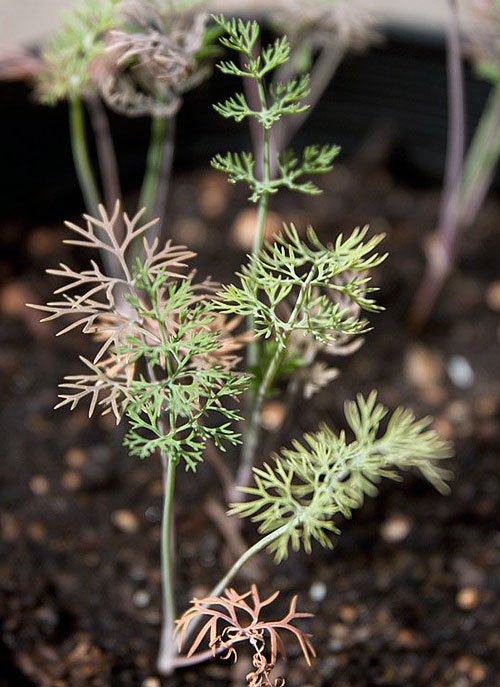

It seems that dill affected by verticillosis withers and dries for no reason.
Most often of all the crops grown on personal plots, garden strawberries and beets suffer from verticillosis. Therefore, it is not recommended to plant dill in the same beds or for at least five years after these plants.
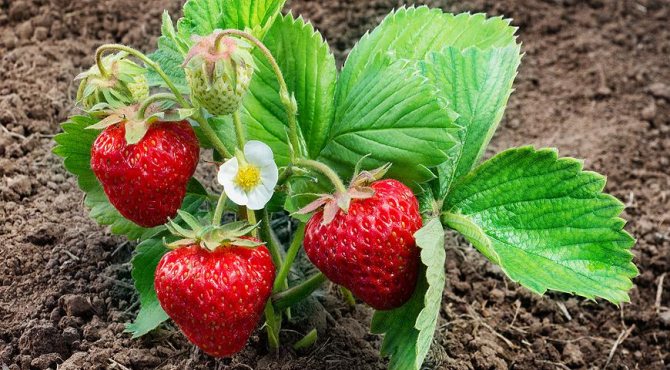

Garden strawberry is a crop that most often suffers from verticillitis when grown in backyard plots.
There is currently no cure for verticillium. Therefore, preventive measures are especially important. The soil in the garden bed is disinfected every autumn, during the active growing season at least once 2-3 weeks it is watered with a solution of biofungicides (Phytocid-R, Fitodoctor, Fitosporin-M). During planting, it is useful to add granules of Glyokladin, Trichodermin, Entobacterin to the soil.
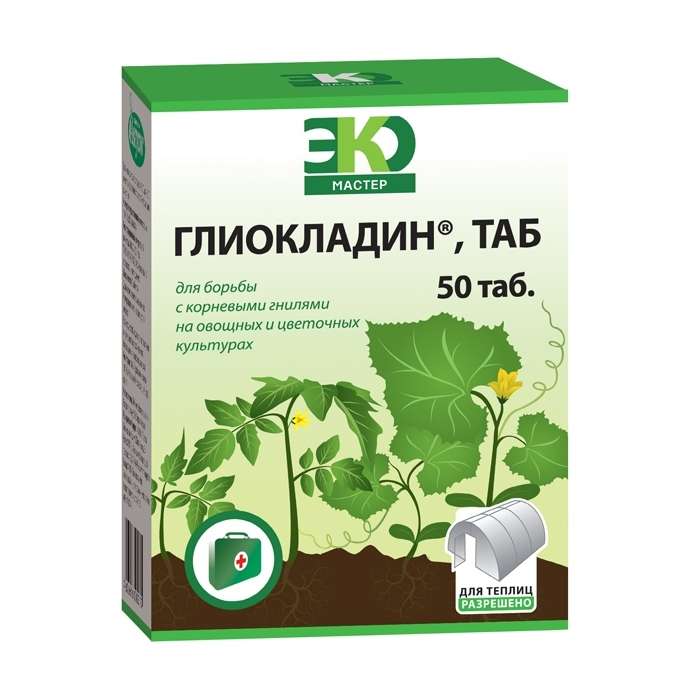

There are no remedies for the treatment of verticillosis, Glyocladin, like other drugs, is used only for prophylaxis
To increase the resistance of dill to this disease, foliar feeding is recommended. They are carried out when the bushes grow up to 8-10 cm in height. In a liter of water, dilute 1-2 g of potassium permanganate, boric acid, copper sulfate, zinc sulfate. The procedure is repeated three more times, with an interval of 10, 20 and 30 days between them. This nutrient solution contains virtually all the trace elements a plant needs. It has a positive effect on its immunity and increases its resistance to any fungal diseases.
"Blackleg"
A disease that is dangerous mainly for young seedlings. It can destroy most or even all of the future dill harvest already at the stage of seed emergence. In the vast majority of cases, the gardener himself is to blame for its development, too often and / or abundantly watering the beds.
The base of the stem becomes thinner, blackens and dries up. The plant lies on the ground under its own weight. Then it quickly dries up and dies.
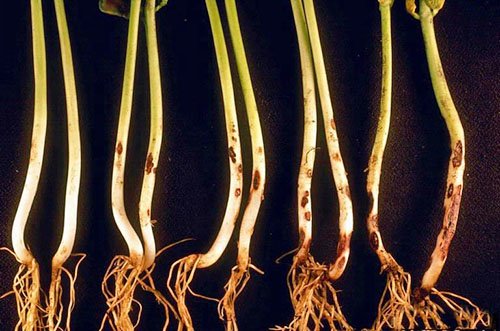

"Black leg" - a disease that affects seedlings and seedlings in the open field
As soon as shoots appear, sprinkle the bed with a thin layer of fine sand. For prevention, dill seedlings are powdered with sifted wood ash or crushed chalk. It is also useful to embed them in the soil in the process of loosening. You can also treat the planting with a solution of ordinary or soda ash (5-7 g per liter of water). It is advisable to irradiate the seeds with a quartz lamp for three to five minutes before planting.
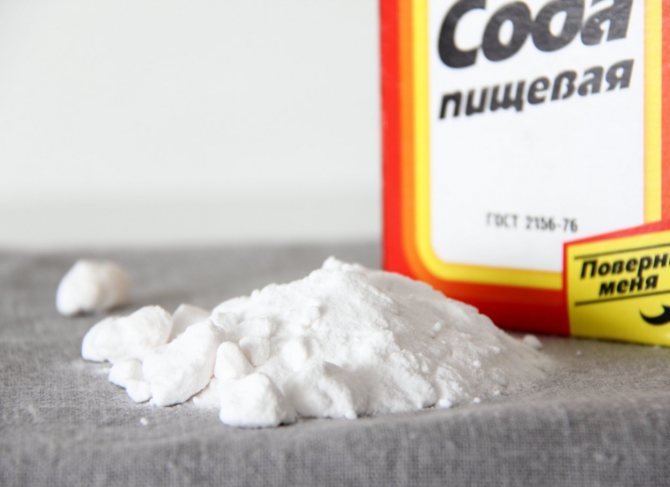

Baking soda or soda water diluted with water helps to cope with the "black leg" at an early stage
Having found the first characteristic manifestations, watering dill is sharply reduced, reducing it to the required minimum. Each time, several crystals of potassium permanganate are added to the water, changing its color to pinkish. Each time after watering, the substrate is loosened, breaking the tough crust on the soil surface so that moisture does not stagnate in it.
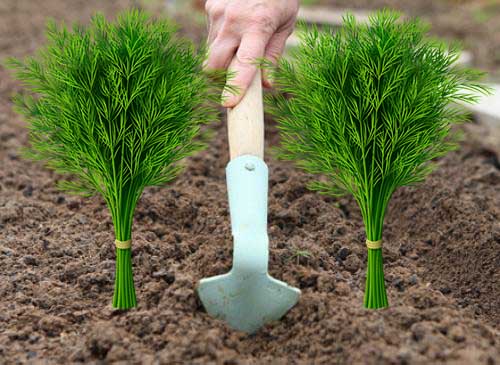

Loosening the soil in the dill bed contributes to its better aeration
To combat the disease, the soil in the garden and the plants themselves are sprayed with a solution of Baktofit, Planriz, Fitosporin-M. Trichodermin or Glyocladin granules are added to the soil. There are also quite effective folk remedies - an infusion of onion husks, wood ash, 3% ethyl alcohol.


